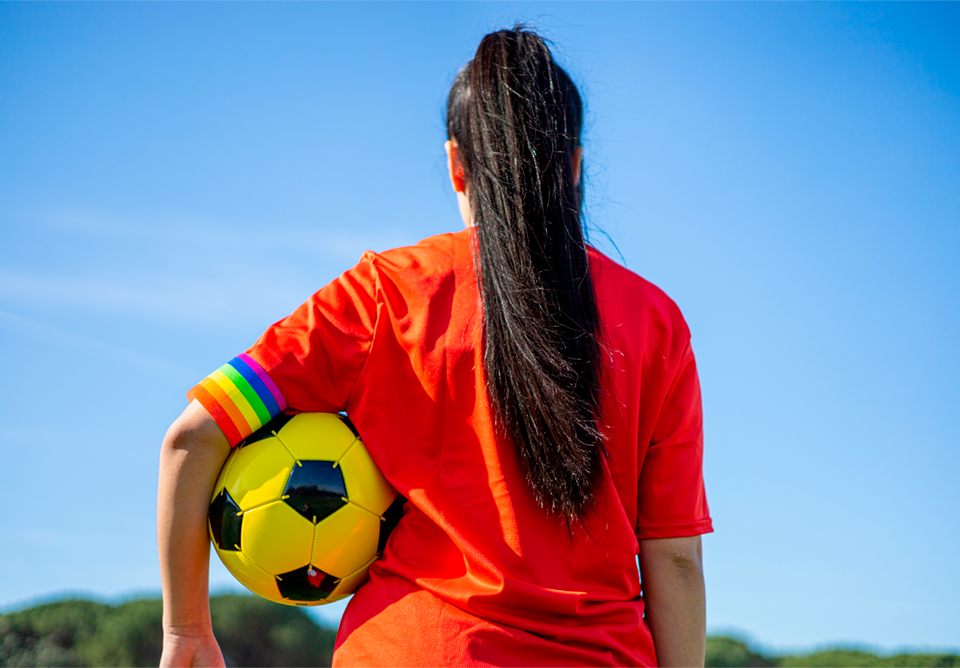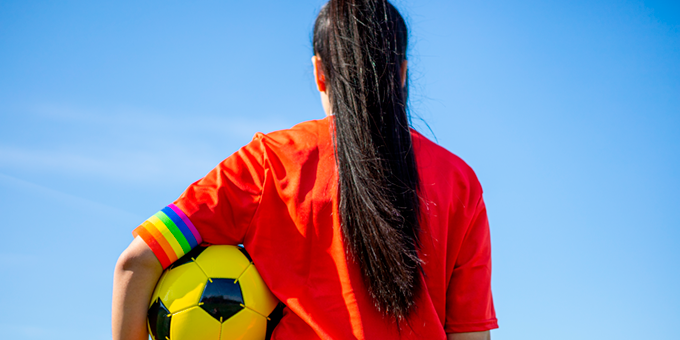How inclusive in football?
During Pride month we take a look at how inclusive football really is towards LGBTQIA individuals.
In women's football, there has generally been more openness and acceptance of the LGBTQIA community compared to men's football. It is a more inclusive environment where players feel comfortable being open about their sexual orientation. This may be due to various factors, including the diversity and progressive attitudes within women's football and the presence of strong LGBTQIA role models.
Women's football clubs and organizations have been proactive in promoting LGBTQIA inclusion, actively support LGBTQIA initiatives, showcasing their commitment to creating an inclusive environment for all players and fans.
LGBTQIA women footballers have made significant contributions to the sport and have been at the forefront of promoting inclusion and acceptance. Many women's football players have come out as lesbian, bisexual, or queer, helping to challenge stereotypes and advocate for greater inclusivity.
USA’s Megan Rapinoe is openly gay and has been an advocate for LGBTQIA rights both on and off the field. She has raised awareness about issues affecting the community and has been a strong voice in promoting equality and acceptance.
Other women footballers like Abby Wambach, a former U.S. women's national team player who is openly gay has been an advocate for LGBTQIA rights, and Fara Williams, an English women's national team player who publicly came out as gay in 2017.
Despite progress in the acceptance of LGBTQIA individuals in society, men’s professional football remains an environment where players feel unable to openly express their sexual orientation due to fear of discrimination, prejudice, and potential negative consequences for their careers.
The lack of openly gay male footballers in professional leagues is indicative of the challenges faced by LGBTQIA individuals in the sport. Many footballers choose to keep their sexual orientation hidden to protect themselves from potential backlash, including homophobic slurs from fans, teammates, and even coaches. This culture of silence and fear perpetuates a hostile environment that prevents gay players from feeling comfortable enough to be open about their identities.
The pressure to conform to traditional gender norms and the pervasive homophobia in football contribute to the marginalization of gay players. The sport has historically been associated with hypermasculinity, and the fear of being stigmatized or ostracized can deter gay footballers from coming out.
Positively, there has been a growing recognition among football clubs of the importance of LGBTQIA inclusion and creating a safe and welcoming environment for all individuals. A few examples:
1. Stonewall's Diversity Champions: Stonewall, a leading LGBTQIA rights organization in the UK, runs a program called Diversity Champions, which encourages organizations, including football clubs, to create inclusive workplaces. Several clubs, such as Arsenal FC, Manchester City FC, and Tottenham Hotspur FC, have joined this program to demonstrate their commitment to LGBTQIA inclusion.
2. Rainbow Laces Campaign: Organized by Stonewall, it is an initiative aimed at tackling homophobia, biphobia, and transphobia in sport. Football clubs across various leagues, including the English Premier League, Scottish Premiership, and Bundesliga, have shown their support by wearing rainbow-colored laces on their boots, displaying rainbow flags, and promoting LGBTQIA inclusivity during matches.
Several football clubs have established LGBTQIA supporter groups or fan clubs. These groups provide a sense of community and create safe spaces for LGBTQIA fans to enjoy matches together. For example, Manchester United has the "LGBT Supporters' Club," and Chelsea FC has the "Chelsea Pride" group.
Many football clubs have implemented policies and training programs to address discrimination and promote inclusion. This includes education for staff, players, and fans on LGBTQIA issues and the consequences of discriminatory behavior. The Football Association (FA) in England has also introduced mandatory equality and diversity training for all professional clubs.
Some football clubs participate in local Pride parades and events to show their support for the community. They may display rainbow-colored banners, march in Pride parades, or host events at their stadiums. This visible support helps create a more inclusive environment and sends a message of acceptance.
Despite these few positive developments, there is still work to be done to ensure full inclusion and acceptance of LGBTQIA individuals in football. Homophobic language and behavior can still be found on and off the pitch, and there remains a lack of openly gay male professional footballers. The fear of discrimination and the potential impact on their careers still prevent some players from coming out.
To create a more inclusive environment, ongoing education, awareness campaigns, and strong policies against discrimination are necessary. It is essential to foster a culture of acceptance, where all players and fans, regardless of their sexual orientation or gender identity, can participate in and enjoy the sport without fear of prejudice or discrimination.
Keywords: no foul play, LGBTQIA community, football and homophobia, inclusive football, pride month













Leave a comment on this post